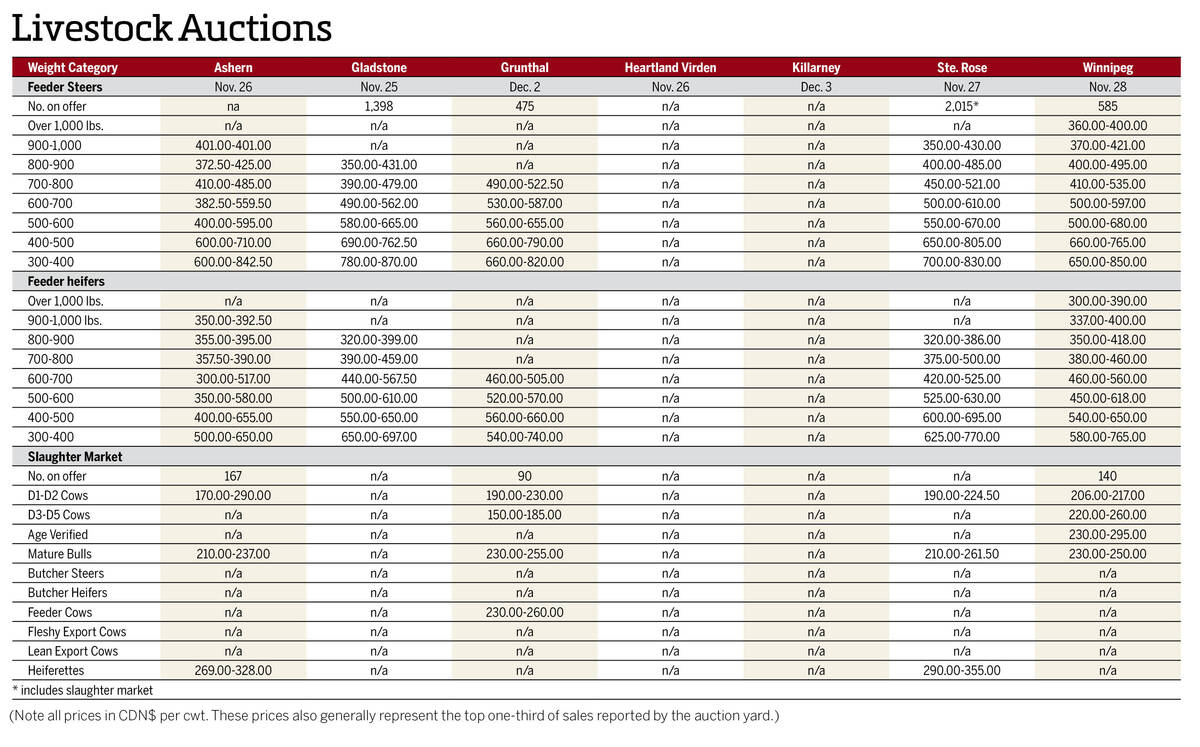As canola pulled away from its support level of $680 per tonne early in the week of May 1, the oilseed trade was muddled. Signs of that cropped up in the May 3 morning trading session, when it bounced on either side of steady. That again occurred May 4 and lasted most of the day.
Despite little in the way of support, ICE Futures canola contracts saw gains in the old-crop July contract and losses in the new-crop positions. Then things flipped back and forth until the final bell.
The notion of canola, old or new crop, being able to climb higher during the week was in itself remarkable. Crude oil, the king of commodities, took some very heavy hits in the market. When crude is down, vegetable oils such as canola, Chicago soyoil, European rapeseed and Malaysian palm oil often follow suit.
Read Also

Manitoba cattle prices, Dec. 3
Cattle prices from Manitoba’s major livestock auction marts during the week Nov. 25-Dec. 2, 2025.
But in need of a correction, canola found its legs and regained some of the ground it forfeited the week before. The thinking was that canola dropped as low it would go and now it was time to push it back up. Resistance now is believed to be around $750 per tonne.
That could be tested in the near future, as canola is open to a bounce of up to $50/tonne if the conditions are right. Support would have to come from gains in other veg oils, as well as crude oil.
There lies the crux of the matter: Chicago soybeans have been getting pressure from that massive harvest in Brazil, where soybeans are making their way onto the global market. Brazil soybeans are said to be cheaper than those from the U.S., and major buyers such as China will switch to Brazil to fill their needs.
However, all is not lost; far from it. As spring seeding gets underway across the Prairies, canola could test that resistance level. Quite often prices rise as a bead on the year’s plantings becomes clearer.
Such won’t come from Statistics Canada following last month’s prospective planting report, and Agriculture and Agri-Food Canada won’t stray far from its fellow agency’s numbers. Traders and analysts will get a sense of what’s going into the ground from the comments they get from their clients.
Better-than-expected weather across the Prairies during the first week of May prompted farmers to get on their fields a bit earlier than anticipated, especially in the drier areas of southern Alberta and southwestern Saskatchewan.
With timely rains, this year’s canola crop could get off to a good start. Then it becomes a matter of what Mother Nature has in store for the Prairies for the summer.
















